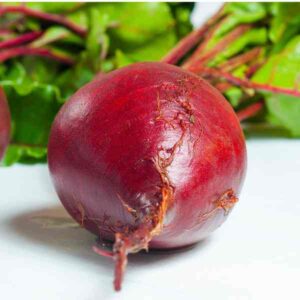Bean Scarlet Emperor
$5.99
Phaseolus Coccineus
- Seed Count 20
- Very Tasty Bean
- Annual
In stock
Description
Bean Scarlet Emperor has been a favourite for decades, which is no surprise, it produces heavy crops of long, smooth textured dark-green, pods of excellent flavour.
Sliced and blanched, they freeze well for tasty out-of-season supplies.
Scarlet Emperor sets fat, slightly fuzzy pods filled with a rich savory beans.
Though the 15 to 20cm (6 to 8in), plump, juicy pods are less uniform than some varieties, the taste of Scarlet Emperor is as sweet as a bean can get.
This easy-to-grow food needs little tending, traditionally used as a soup bean, the beans are also edible as young pods.
With its large sprays of brilliant rich, red flowers that contrast against deep green foliage, it is grown both for the flowers and the sweet pods.
With such magnificent slender clusters of rich red flowers, the Scarlet Emperor can be used as a flowering screen, vine, or fence cover.
The black and purple seeds are also used to make bean jewelry.
| Method: Sow direct | Soil Temp: 16°C - 30°C |
| Cool Mountain: Oct - Dec | Position: Full sun |
| Arid: Sep - Jan | Row Spacing: 20cm |
| Temperate: Sep - Jan | Planting Depth: 10mm |
| Sub Tropical: Aug - Apr | Harvest: 70 Days |
| Tropical: Apr - Jul | Plant Height: 2m |
Growing Climbing Beans
Climate and Timing:
- Planting Time: In temperate regions, late spring to early summer is best.
- In subtropical areas, you can plant beans from late winter to early autumn.
- Temperature: Beans thrive in temperatures between 15°C to 30°C. They require a frost-free period to grow effectively.
Soil Preparation
- Soil Quality: Ensure the soil is well-draining with good fertility. Beans prefer a neutral pH of 6 to 7.
- Improving Soil: Before planting, enrich the soil with compost or well-rotted manure. Beans fix nitrogen into the soil, but added organic matter supports initial growth.
Planting Process:
- Sow seeds directly once the danger of frost has passed.
- Plant seeds about 1 cm deep and space them 20 cm apart within rows 20 cm apart.
- If using a trellis or teepee system, space these supports accordingly before planting.
Support Systems:
- Use sturdy supports. Trellises, teepees, or poles work well.
- For trellises, orient them north to south to maximize sunlight exposure on both sides.
Watering and Maintenance:
- Watering: Regular watering is crucial, particularly during flowering and pod set.
- However, avoid waterlogging, which can drown roots or promote fungal diseases.
- Mulching: Apply mulch to retain soil moisture, regulate temperature, and reduce weed growth.
Fertilisation and Care:
- While beans generally do not require much fertilisation due to their nitrogen-fixing ability, a light application of a balanced organic fertiliser at the start of the growing season can help.
- Regularly inspect plants for signs of common pests like aphids or spider mites and manage with appropriate organic treatments if necessary.
Harvesting:
- Beans typically mature within 70 days after planting.
- Harvest when the pods are firm and before seeds inside begin to bulge, ensuring tender beans.
- Picking pods regularly encourages further production.
Companion Planting
Compatible Plants:
- Corn: Provides natural supports for beans to climb, forming a symbiotic relationship where beans fix nitrogen, boosting corn’s growth.
- Squash and Pumpkins: With their broad leaves, these plants help control weeds by shading the soil and maintaining moisture.
- Carrots and Radishes: Utilise vertical garden space efficiently, with roots growing underground while beans climb upward.
- Marigolds: Known for their pest-repellent properties, they attract beneficial insects and deter harmful nematodes.
Plants to Avoid:
- Alliums (Garlic, Onions): These can inhibit bean growth due to the production of chemicals that negatively impact bean roots.
- Beets: They compete for similar nutrients, potentially stunting each other’s growth.
Additional Tips:
Crop Rotation:
- Rotate beans with other crops to prevent pest buildup and improve soil nutrients.
- Avoid planting where legumes have grown in the past two years.
Pest and Disease Management:
- Implement pest control measures early. Use natural or organic pesticides if necessary, and encourage predators such as ladybirds.
- Prevent diseases through proper spacing to ensure good air circulation and by removing diseased plants promptly.















3 reviews for Bean Scarlet Emperor